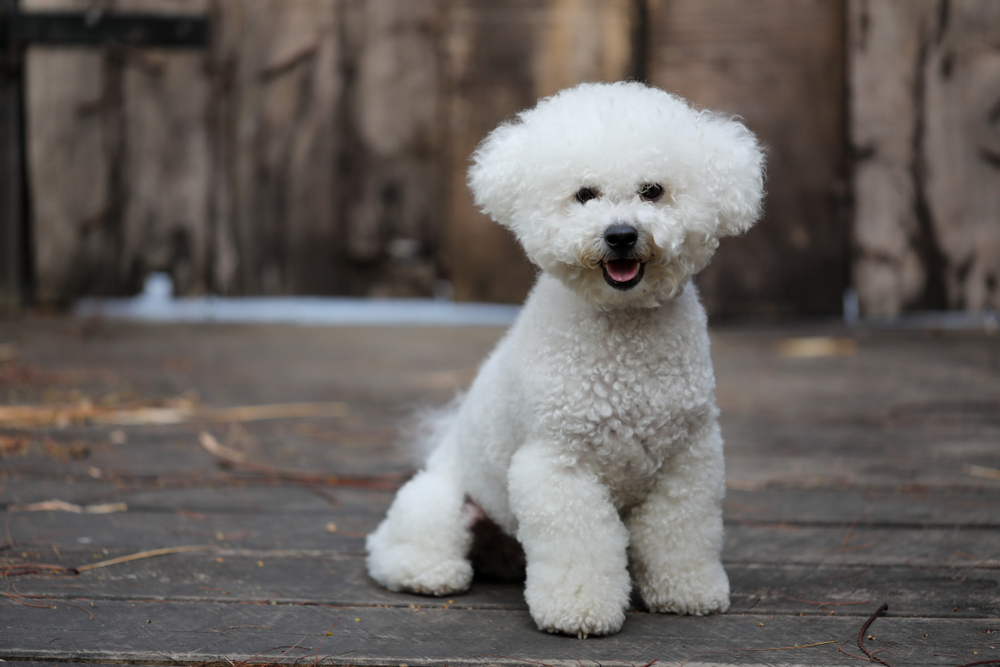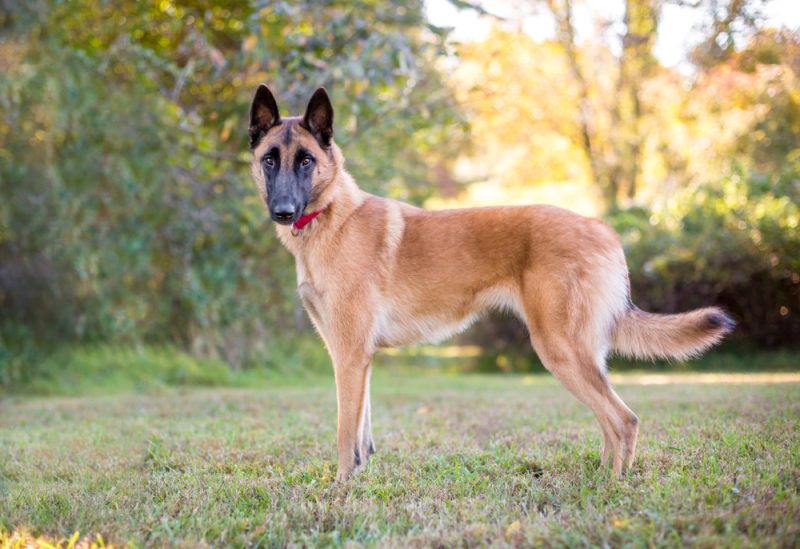Original Article: https://www.dogster.com/lifestyle/how-old-is-2-in-dog-years
Click to Skip Ahead
Thinking of every dog year as equal to seven human years is a convenient way to gauge a dog’s age, but it’s rarely accurate, especially in a pet’s early years. By this equation, a 2-year-old dog will be roughly 14 years old in dog years. The truth is that this drastically underestimates their relative age, as dogs are closer to 22–24 in dog years when they reach their second birthday.
The vast disparity between these estimated ages can impact how we perceive and care for our dogs. Getting it right is crucial. To help you treat your dog in age-appropriate ways, we’ll break down how old your 2-year-old dog is in dog years according to their size.
| Size: | Age in human years: |
| Small breed (<20 lbs or less): | 24 years |
| Medium breed (21 to 50 lbs): | 24 years |
| Large breed (51 to 100 lbs): | 24 years |
| Giant breed (100+ lbs): | 22 years |
Source: Almanac.com


How to Calculate Dog Years to Human Years
Rather than rely on the “1 year for every 7 dog years” formula, many dog lovers use an updated equation that makes every year equal to roughly five dog years. In the first part of their lives, dogs undergo rapid growth, so we have to apply a unique measure for their first and second years.
The first year sees significant change equal to approximately 15 human years of development. In the second, development slows compared to the first year but stays relatively quick at roughly 9 years. As a result, dogs will be around 24 years old in dog years when they reach 2 years old. The rule is general, as dogs vary in their development rate primarily based on size.
Small Dogs

At 2 years of age, small dogs have finished their development. With smaller bodies, many of these breeds reach sexual, physical, and mental maturity by the end of their first year and settle into adulthood during their second. Activity levels are still high, but their temperament levels out and becomes more or less set for the long term.
Understanding the differences in maturation between breed sizes is crucial through a dog’s first 2 years. While smaller dogs will already be on adult food by this point, large and giant dogs may still be growing and need the support of a puppy formula.
Likewise, desexing a small dog will be unlikely to cause issues during their first year. By contrast, larger dogs may need to wait until they reach 18 months or older before spaying or neutering can occur to prevent potential orthopedic problems and other health issues.
Medium Dogs

Mid-sized dogs typically follow a similar developmental path as smaller dogs, though their overall lifespans are often shorter. In the first 2 years, these dogs age roughly 24 dog years.
Large Dogs

Large and giant dogs have a unique growth pattern compared to small and medium-sized breeds. We may consider them relatively young for the first 2 years, only reaching 22 in dog years by their second birthday.
Part of this is due to their rapid yet long growth period. Although these dogs grow quickly, their enormous bodies take more time to develop, with some not reaching full maturity until their third or fourth year. Mental maturity is also often slower. Adolescence continues for a while for many large and giant breeds, generally lasting until the dog finishes growing.
After the second year, the relative age of large dogs flips, and they begin aging faster than smaller dogs. In this regard, age primarily observes how long the dog lives once they reach maturity. It does not reflect a dog’s mental age but rather their physical decline.
Large breeds wear down faster in obvious ways as they age, particularly in orthopedic health, and cancer development rate. In terms of behavioral and cognitive aging, they don’t differ much from smaller breeds. They have shorter lifespans and more bodily issues mainly due to their fast growth, selective breeding, and greater oxidative stress, but despite this larger dogs don’t mentally age any quicker than other dogs.


What’s the Science Behind Dog Years vs. Human Years?
Two years is a long time for dogs, explaining why the updated model for converting human years to dog years makes sense. Dogs go through puppyhood and adolescence in their first 2 years, with smaller breeds reaching their teenage period earlier and finishing it quicker. By age 2, dogs are generally in their young adult phase of activity and mental and social maturity.
A more recent assessment of a dog’s relative age complicates matters but gives us an even better way of calculating the human equivalent. Scientists evaluated age using DNA methylation, looking at how genes and their expressions change over time.
In their research, they landed on an updated equation for finding a dog’s human age equivalent by multiplying the natural logarithm of the dog’s age by 16 and adding 31: human age = 16 x ln(dog’s chronological age) + 31.
By this equation, dogs age roughly 31 years in their first year. Every time their age doubles, we add another 11 years. At age two, this would mean dogs are roughly 42 years old in dog years. It’s older than what we would expect at that point and suggests dogs reach middle age sooner than anticipated.
The Life Stages of a Dog
Dog breeds can vary drastically in how much and how quickly they mature through the first 2 years. Across their entire lives, dogs progress through several stages of growth and decline. Though the exact ages and ranges of each stage are up for debate, the following is a basic outline of what you can expect for a long-lived dog.
- Puppy (0–6 months): Puppies develop rapidly and need constant training, socialization, and positive reinforcement to set them up for success as adults
- Adolescence (6–12+ months): “Teenage” dogs become more stubborn, energetic, and challenging as they deal with hormonal and cognitive changes on their way to adulthood
- Young adult (2–4 years): Mature dogs have reached their physical, breeding, and cognitive prime
- Middle age (4–8 years): Middle age can begin and end earlier for large dogs and later for small dogs, representing a time of physical activity but also the potential appearance of chronic health issues
- Senior (8+ years): Dogs may begin showing visible signs of aging, including graying hair and reduced energy, while orthopedic issues, cognitive and ocular decline, cancer, and other health problems become more prevalent

Life Span by Breed Size
| Size: | Average life span: |
| Small breed (<20 lbs or less): | 10-15 years |
| Medium breed (21 to 50 lbs): | 10-13 years |
| Large breed (51 to 100 lbs): | 10-12 years |
| Giant breed (100+ lbs): | 8-10 years |
Source: American Kennel Club


Key Factors That Affect the Dog’s Aging Process
While factors like breeding practices, early upbringing, genetics, and body size may not be in an owner’s control, we have plenty of ways to affect how long and well our dogs live.
- Body condition score: Maintaining a proper weight helps maintain overall health and can increase longevity
- Exercise and enrichment: Stimulating a dog’s natural drives through exercise, play, toys, puzzle feeders, and other activities can maximize cognitive and physical health
- Diet: Age and breed-appropriate foods rich in proteins, antioxidants, omega fatty acids, and other essential nutrients ensure proper development and can slow age-related decline
- Grooming: Coat, nail, ear, eye, and dental care prevent infections and injuries that speed up age-related bodily issues
- Vet visits: 1–2 annual checkups for exams and blood work can reveal potential health issues while they’re early and manageable
- Preventatives, medications, and supplements: Working with your vet to form an appropriate preventative healthcare plan for your dog including vaccinations and parasite prevention is important to prevent disease. Following medical advice for appropriate prescriptions and supplements can also improve longevity.


Conclusion
Two years old is a transformative age for dogs that can mean different things for different breeds. While some are already mature, others are only wrapping up their adolescence, requiring unique considerations around how we interact with and care for them. It may be early in your dog’s life, but this is the perfect time to discuss changes to the routine with your vet to set your adult pet up for several more years of health and happiness.
Featured Image Credit: DavidRaifort, Shutterstock
Source: Dogster












